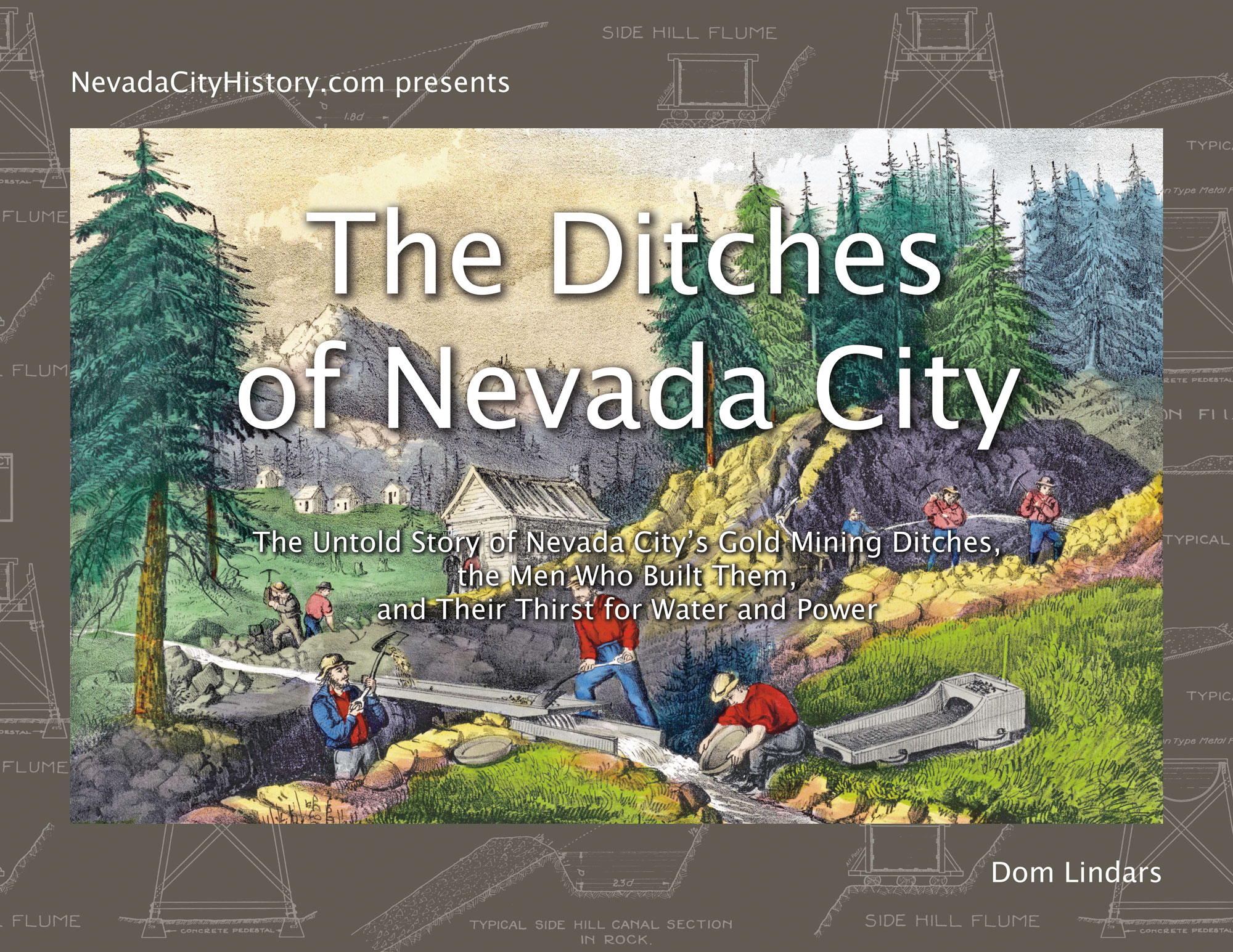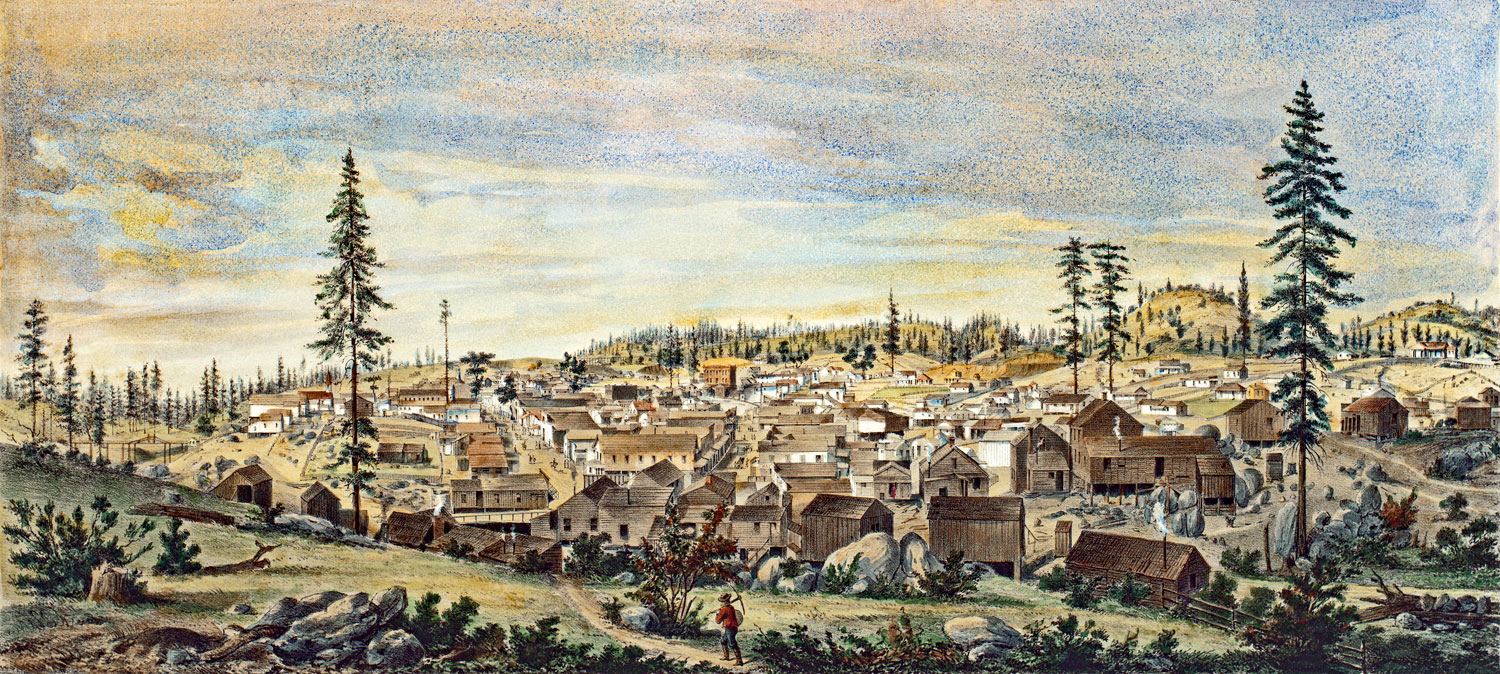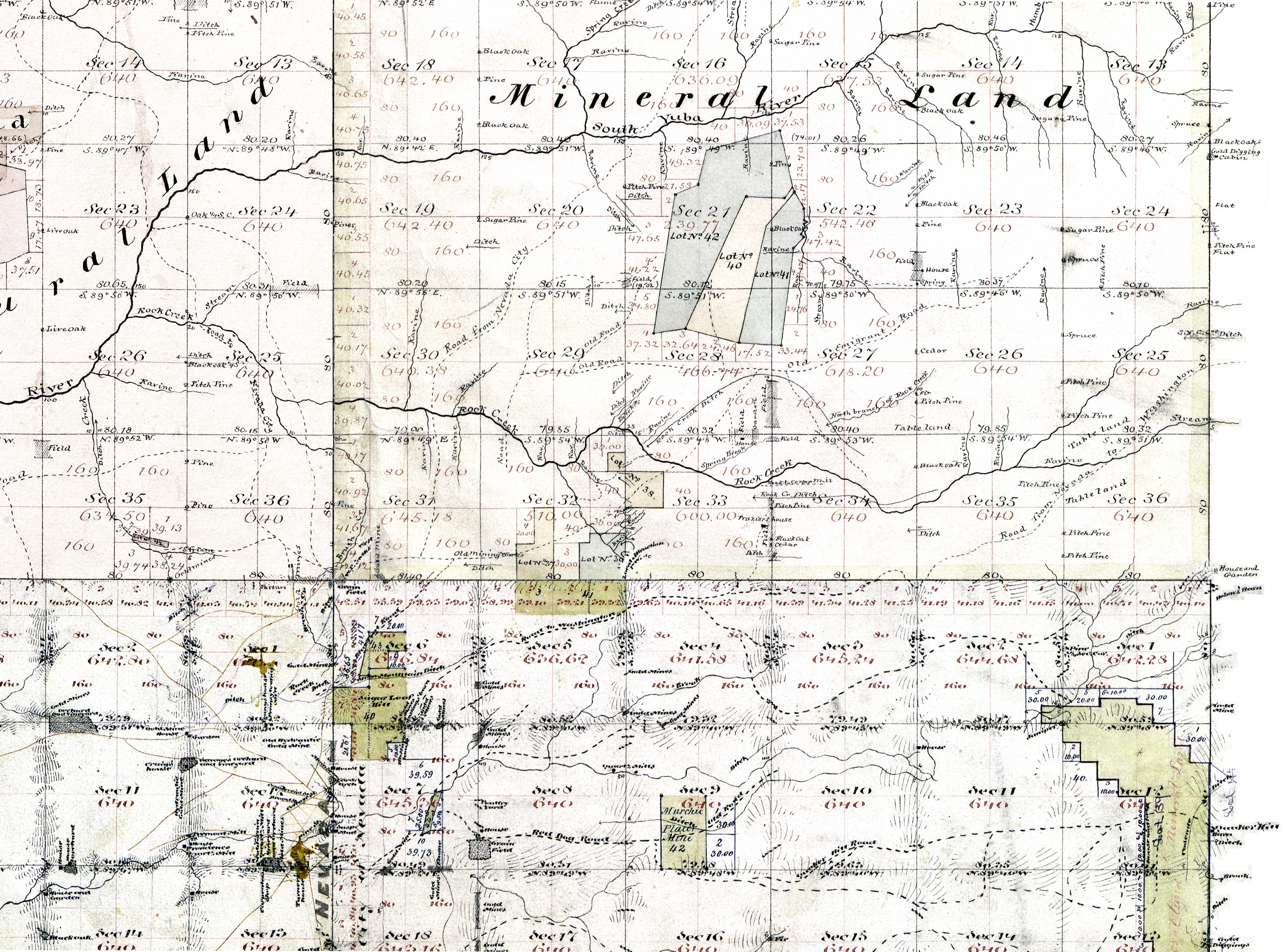Nevada County Historical Society
|

|
A New Book Now Available!

This vivid portrayal traces the ingenuity and hard work of the town’s gold miners and ditch builders, while uncovering the origins of various local neighborhoods, like Hirschman's Pond, Sugar Loaf Mountain, Scotts Flat, Manzanita Diggings and Gold Flat.
What began as a search to uncover Nevada County’s sprawling network of ditches turned into a comprehensive look at the history of Nevada City, its people and the businesses that thrived from the wealth generated by gold mining and selling water.
This compelling account includes previously unpublished family histories, detailed descriptions of 19th century ditch construction and mining techniques, with over 600 color illustrations, including 200 historic photographs and 75 hand-crafted maps.
Now available in hardcover at local book stores in Nevada City and Grass Valley.
Or through Amazon.com in hardcover and ebook or on Apple Books and Google Play.
Praise for The Ditches of Nevada City:
- Amazon Review - “...Dom Lindars has created a treasure trove that so many people will be able to draw from. The breadth of information and photos included in this book, combined with an unpretentious, approachable narrative, make it both a valuable resource and a highly enjoyable read.”
- Book Review by Bill Oudegeest from the Donner Summit Historical Society.
Learn About the History

Source: UC Berkeley, Bancroft Library.
You can mouse over the image to see it in more detail.
Explore Historical Maps
If you want to explore this map and many others, go to the Maps section of this site or click Explore below.
How Much Was the Gold Worth?
Over the last 170 years, inflation has increased everything by a factor of about 36. But during the California Gold Rush, everything got out of whack. Merchants in most towns could not get the supplies they needed for all the miners and prices soared. Paper money, or greenbacks, were not introduced until March 1863, so for many years in California gold was the only hard currency. Later gold coins were produced by US mints, but for the rough and tumble of an early mining camp a leather pouch filled with gold dust or nuggets ruled the day.
In the early 1850s, you might get paid an ounce of gold for a days work, which was considered to be about $16 a day. At the same time back East, most workers would have been happy to be paid $2-3 a day. The offical price of gold was $20.67 per ounce, which today "adjusted for inflation" is about $750. But an ounce of gold today can be sold for about $1,800.
While most forty-niners returned home broke, there were so amazing finds recorded in Nevada City. The following article appeared in the Nevada City Transcript on February 3, 1898, at the time of the Klondike Gold Rush. the links in the article will show you how much that amount of gold is worth day.
The Klondike Not in It.
This afternoon A. Isoard, the Broad St. merchant who came here in 1849, told the Transcript about some finds of gold in this district in the early days that make the present tales from Klondike appear tame.
In 1850 Mr. Isoard and his six partners took from a claim 40x60 feet in dimensions and situated just back of where Mrs. C. Beckman's house now stands on East Broad St., the sum of $64,000. One pan yielded $912 in nuggets and two other pans paid $500 each. One day the richest pan was only $135 and they all got discouraged because they thought the ground was petering. The clean-ups ran from $2,000 to $3,000 a day. Joseph Figuiere who has been in the money order department of the San Francisco post office for years, and Mr. Isoard are the only two surviving members of the company.
On Wet Hill in 1855 the late L. Hirschman washed one pan of dirt that paid $832.
In the Nebraska diggings in 1866 the late Harry Seymour got a pan one day that produced $1,110.
One pan taken at the foot of Sugar Loaf Mountain in 1857 gave $1,200, that I being the best result that Mr. Isoard has any recollection of.
